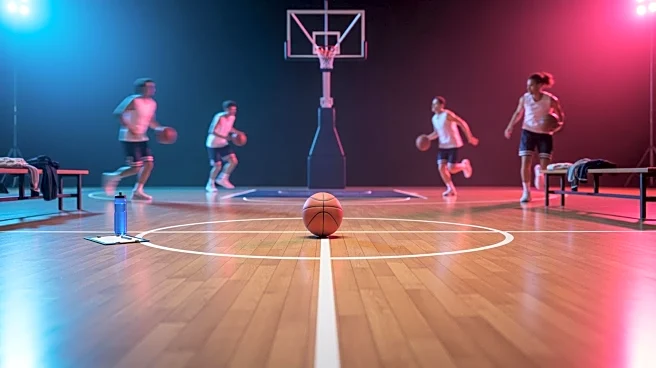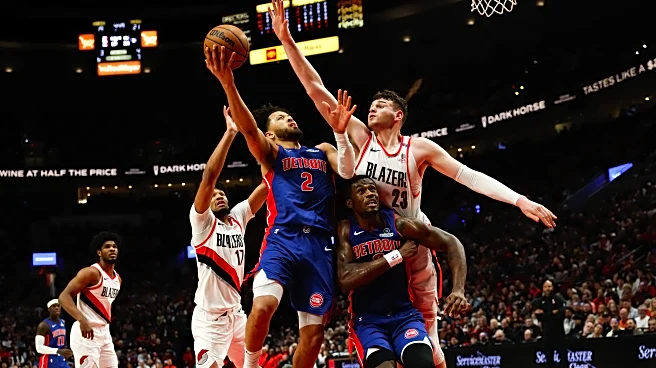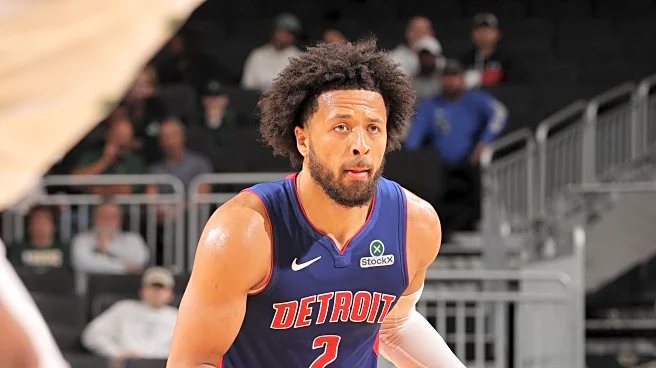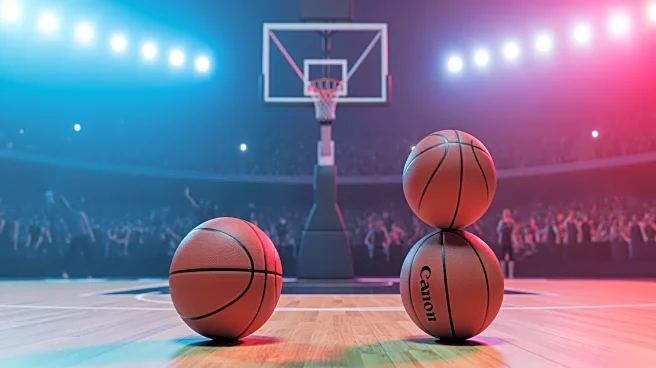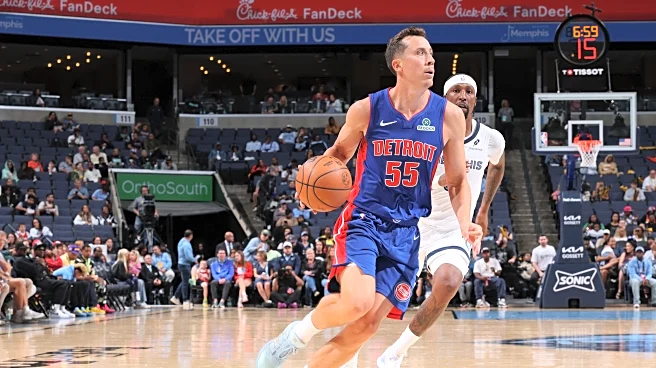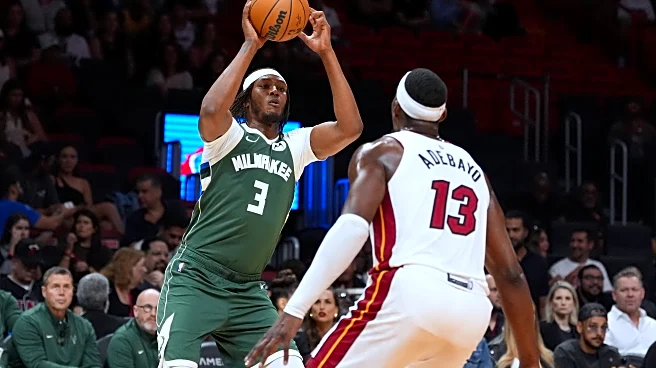What's Happening?
The Detroit Pistons are set to give Ausar Thompson a more prominent role in the upcoming 2025-26 NBA season. Thompson, known for his athleticism, will be tasked with handling the ball more frequently,
allowing Cade Cunningham to play off the ball. This strategic shift comes after Thompson's health restrictions were lifted last season, enabling him to showcase his two-way skills. Thompson's performance improved significantly in the 2024-25 season, averaging 10.5 points, 5.1 rebounds, 2.3 assists, 1.7 steals, and 0.7 blocks per game. Despite his shooting percentages being less than ideal, his quickness offers a different dynamic compared to Cunningham's style. The Pistons are also dealing with injuries to guard Jaden Ivey, which may necessitate Thompson's increased ball-handling responsibilities.
Why It's Important?
This development is crucial for the Pistons as they aim to build on last season's progress. By diversifying their offensive strategies, the team hopes to maximize its potential and reach new heights. Thompson's increased role could be pivotal in overcoming challenges posed by injuries and enhancing team performance. His ability to adapt and contribute in various aspects of the game could be a key factor in the Pistons' success. The decision to shift responsibilities also reflects the team's confidence in Thompson's capabilities and their strategic approach to optimizing player strengths.
What's Next?
As the season progresses, the Pistons will closely monitor Thompson's performance in his new role. The team will likely make adjustments based on his effectiveness and the overall team dynamics. Stakeholders, including coaches and management, will evaluate the impact of this change on the team's success. If Thompson excels, it could lead to further strategic shifts and solidify his position as a key player in the Pistons' lineup.
Beyond the Headlines
This move highlights the Pistons' commitment to developing young talent and adapting to changing circumstances. It underscores the importance of flexibility in team strategies and the potential for players to redefine their roles. The decision also reflects broader trends in the NBA, where teams increasingly focus on maximizing player versatility and adapting to evolving game dynamics.
